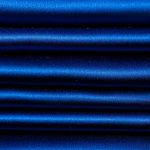Are you ready to learn how to effortlessly cut boiled wool fabric?
In this guide, we’ll show you the tools and materials you’ll need, as well as the step-by-step process to prepare the fabric, mark and measure accurately, and cut both straight lines and curves with ease.
Finally, we’ll cover the finishing touches and cleaning up.
Get ready to master the art of cutting boiled wool fabric like a pro!
Table of Contents
Tools and Materials Needed
To cut boiled wool fabric, you’ll need a sharp pair of fabric scissors and a cutting mat to protect your work surface. Proper cutting techniques are essential to ensure clean and precise cuts without damaging the fabric.
First, make sure your fabric is flat and free from any wrinkles or folds. Lay it out on the cutting mat and smooth it down with your hands.
Position your fabric scissors at a 45-degree angle and apply steady pressure as you cut through the fabric. Avoid using dull scissors as they can result in jagged edges and fraying.
If you encounter any resistance while cutting, stop and examine the fabric. It’s possible that there is a thick seam or multiple layers that need to be separated before proceeding.
Troubleshooting common issues such as fabric stretching or uneven cuts can be resolved by using pattern weights or pins to hold the fabric in place.
Remember to take your time and practice patience to achieve the best results.
Preparing the Wool Fabric
When preparing wool fabric for your project, it’s important to choose the right tools for the job. Using tools that are specifically designed for cutting and measuring fabric will ensure accuracy and efficiency in your work.
Properly measuring the fabric and avoiding fraying edges are also key points to consider. These steps will help you achieve clean and professional results in your sewing or crafting project.
Choosing the Right Tools
Using the right tools can make cutting boiled wool fabric much easier. Here are the key tools you need to consider:
-
Choosing the right scissors: Invest in a pair of sharp, high-quality scissors specifically designed for cutting fabric. Look for scissors with a comfortable grip and a pointed tip for precision cutting.
-
Using a rotary cutter: If you prefer a more efficient and precise cutting method, a rotary cutter is a great option. Make sure to use a cutting mat underneath the fabric to protect your work surface and ensure smooth cutting.
-
Seam ripper: Mistakes happen, and a seam ripper is a handy tool for undoing any unwanted stitches. Look for one with a sharp, pointed tip for easy removal of stitches without damaging the fabric.
-
Fabric marking tools: When working with boiled wool fabric, it’s important to mark your cutting lines accurately. Use tailor’s chalk or fabric markers that can easily be removed or washed away.
Properly Measuring the Fabric
Make sure you accurately measure the length and width of your material before beginning your project. Proper measuring techniques are essential to ensure a successful outcome.
One common mistake is not using a ruler or tape measure to get precise measurements. Eyeballing it may lead to inaccuracies and uneven cuts.
Another mistake is not double-checking your measurements before cutting the fabric. It’s easy to make a small error that can have a big impact on the final result. Take the time to measure twice and cut once to avoid wasting fabric and time.
Additionally, be mindful of the direction of the fabric’s pattern when measuring. This will help you determine the best way to lay out your pattern pieces.
Avoiding Fraying Edges
To prevent fraying, it’s important to secure the edges of the material. Here are four simple steps to help you prevent unraveling and keep your fabric looking neat and tidy:
-
Use fabric stabilizers: Applying a fabric stabilizer to the edges of your boiled wool fabric can help prevent fraying. These stabilizers create a barrier that holds the fibers in place, reducing the chances of unraveling.
-
Trim the edges: Before securing the fabric, trim any uneven or frayed edges. This will create a clean starting point and make it easier to secure the edges.
-
Apply a seam sealant: Another option is to use a seam sealant, such as Fray Check, along the edges of the fabric. This liquid sealant dries clear and helps to prevent fraying by binding the fibers together.
-
Use a zigzag stitch: When securing the edges, use a zigzag stitch on your sewing machine. This stitch creates a flexible seam that helps to prevent fraying and adds durability to the fabric.
Marking and Measuring
When cutting boiled wool fabric, it’s important to accurately mark and measure the pieces. This ensures that you have precise and consistent cuts, resulting in a professional-looking finished product.
To start, use marking techniques such as chalk or tailor’s pens to indicate the cutting lines on the fabric. Make sure to choose a color that contrasts well with the fabric, so the markings are easily visible.
When measuring, use a clear ruler or measuring tape to ensure accuracy. Take the time to measure each piece multiple times to double-check your measurements before cutting. This will help prevent any costly mistakes or fabric wastage.
When it comes to cutting techniques, use sharp fabric scissors or a rotary cutter with a fresh blade. Cut smoothly and steadily, following the marked lines. Take care not to cut into the fabric too deeply, as this can cause fraying.
Remember to cut slowly and precisely, ensuring clean edges for your project.
Cutting Straight Lines
Ensure you have a clear and steady hand while using sharp scissors or a rotary cutter to achieve straight lines. Cutting straight lines is crucial when working with boiled wool fabric to ensure clean and precise edges for your project.
Here are some tips to help you cut straight lines with ease:
-
Measure and mark: Before cutting, use a ruler or measuring tape to mark the desired length or width of your fabric. This will serve as a guide for your cutting.
-
Align the fabric: Place the fabric on a flat surface and make sure it is smooth and free from any wrinkles. Align the edge of the fabric with the marked line to ensure accuracy.
-
Hold the cutter correctly: If using a rotary cutter, hold it firmly but not too tightly. Position the blade against the fabric, ensuring that it is perpendicular to the marked line.
-
Cut with confidence: Apply gentle but steady pressure as you glide the cutter along the marked line. Keep your hand steady and move the fabric, not the cutter, to maintain straight lines.
Cutting Curves and Shapes
You can achieve smooth and precise curves and shapes by following these tips and using a rotary cutter. When cutting curves and shapes in boiled wool fabric, it is essential to use proper cutting techniques and ensure pattern alignment. Here are some tips to help you achieve accurate cuts:
-
Use a rotary cutter: A rotary cutter is a handy tool for cutting curves and shapes in fabric. It allows for more control and precision compared to scissors.
-
Secure your fabric: Before cutting, make sure your fabric is properly secured to prevent any shifting or movement. You can use pins or pattern weights to keep it in place.
-
Take your time: Cutting curves and shapes requires patience and attention to detail. Slowly guide the rotary cutter along the curve, making small adjustments as needed.
To better understand these cutting techniques, take a look at the table below:
| Tip | Description |
|---|---|
| Use a rotary cutter | A rotary cutter provides more control and precision for cutting curves and shapes. |
| Secure your fabric | Ensure your fabric is properly secured to prevent shifting or movement during the cutting process. |
| Take your time | Cutting curves and shapes requires patience and attention to detail. Make small adjustments as needed. |
Finishing and Cleaning Up
When it comes to finishing and cleaning up your project, there are a few key points to keep in mind.
First, trim any excess fabric to ensure a neat and professional look.
Next, make sure to secure any loose threads to prevent unraveling.
Finally, iron your project for smoothness and to remove any wrinkles.
Trimming Excess Fabric
After boiling the wool fabric, it’s important to trim any excess material. Trimming techniques play a crucial role in achieving cutting precision and giving your fabric a clean and professional finish. Here are four tips to help you trim your boiled wool fabric effectively:
-
Use sharp fabric scissors: Invest in a high-quality pair of fabric scissors to ensure clean and precise cuts. Dull scissors can result in jagged edges and uneven lines.
-
Mark your cutting lines: Before trimming, mark your desired cutting lines with tailor’s chalk or fabric markers. This will help you maintain accuracy and prevent any mistakes.
-
Cut in small sections: Instead of attempting to cut large portions of fabric at once, trim in small sections. This will allow for better control and a more accurate cut.
-
Trim with steady hands: Keep your hands steady and avoid rushing the trimming process. Take your time to ensure each cut is smooth and even.
Securing Loose Threads
To secure any loose threads, simply tie a small knot at the end of each thread using a needle and thread. This simple technique is essential in preventing unraveling and securing raw edges on your boiled wool fabric.
After cutting your fabric, you may notice some loose threads that need to be addressed to maintain the integrity of your project. To secure these threads, carefully thread a needle and bring it through the fabric close to the loose thread. Then, loop the thread around the needle and pull it tight, creating a small knot.
Repeat this process for each loose thread, ensuring that they are all tightly secured. By taking this extra step, you can prevent any potential unraveling and maintain the quality of your boiled wool fabric project.
Ironing for Smoothness
Now that you have secured all the loose threads on your boiled wool fabric, it’s time to iron it for a smooth and polished look. Ironing can help remove any wrinkles or creases, giving your fabric a crisp finish. To ensure successful ironing, follow these techniques and troubleshoot common issues:
- Set your iron to the appropriate temperature for wool fabric.
- Use a pressing cloth to protect the fabric and prevent any damage.
- Start ironing from the wrong side of the fabric, applying gentle pressure in a back-and-forth motion.
- Pay extra attention to delicate areas like seams and edges to avoid stretching or distorting the fabric.
Troubleshooting common issues:
- If the fabric is still wrinkled after ironing, try increasing the heat slightly.
- If you see shiny marks on the fabric, lower the temperature and use a pressing cloth.
- If the fabric becomes shiny or flattened, it may have been over-ironed. Gently steam it to revive the texture.
Conclusion
Now that you know how to cut boiled wool fabric, you can confidently tackle your next project. By following the steps outlined in this article, you will be able to achieve clean and precise cuts every time.
Remember to use the proper tools and take your time to measure and mark the fabric accurately. With practice, you will become more comfortable cutting both straight lines and curves.
Don’t forget to finish and clean up your fabric once you are done cutting to ensure a professional-looking result.
Happy cutting!
- The History of Kevlar Aramid Fabric: When Did It Come Out? - June 23, 2025
- Heracron Aramid Fabric: A Performance Review - June 23, 2025
- Glass-Aramid Fibre Fabric in India: A Sourcing Guide - June 23, 2025



